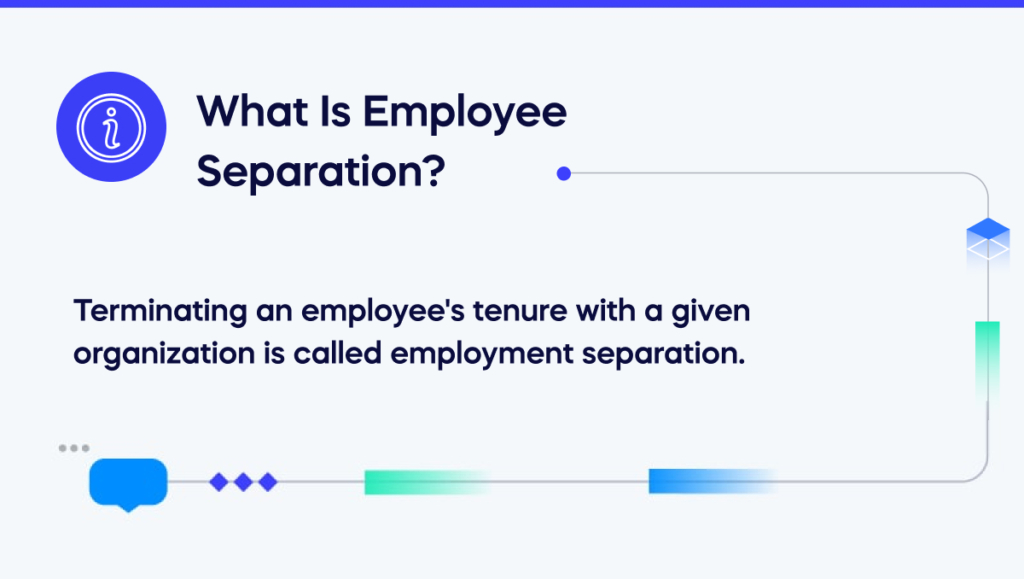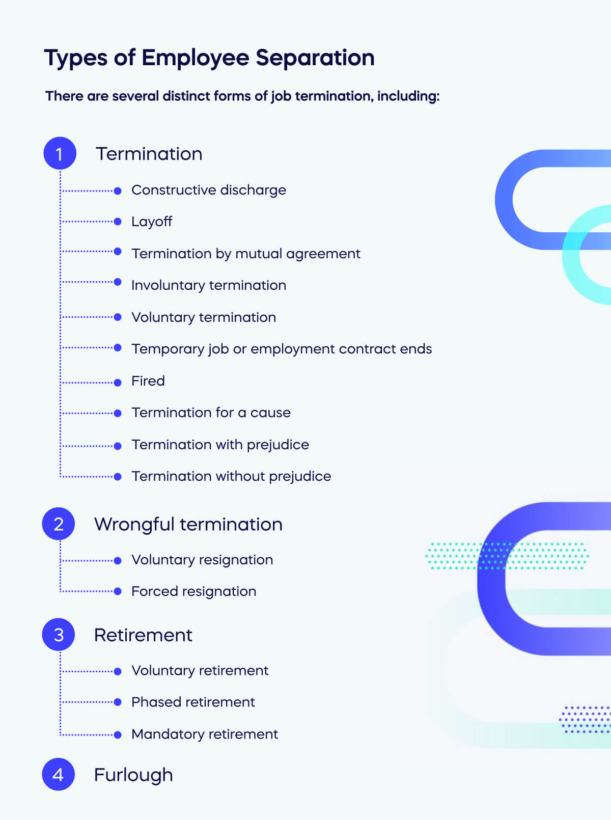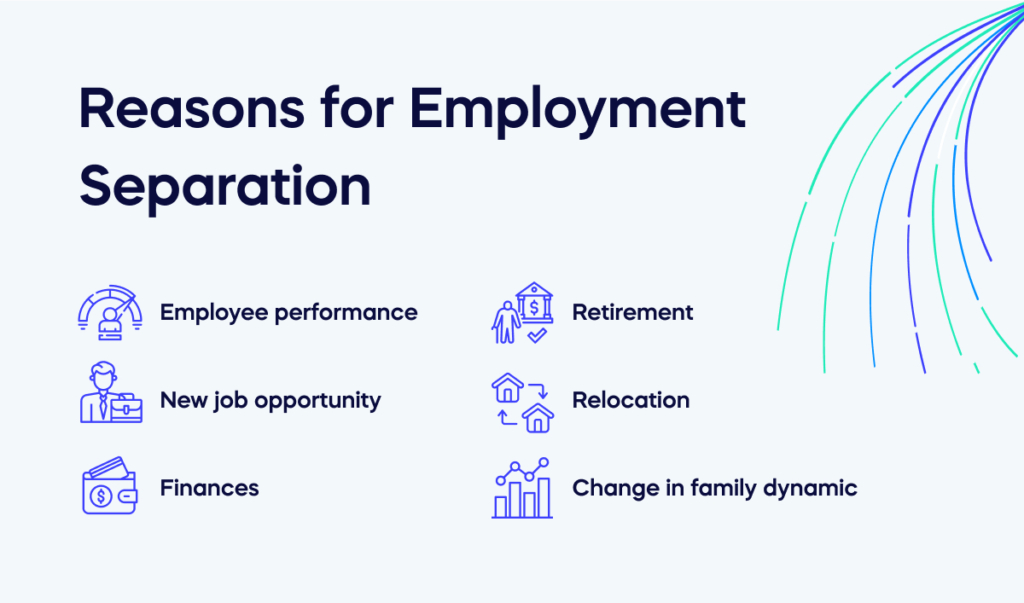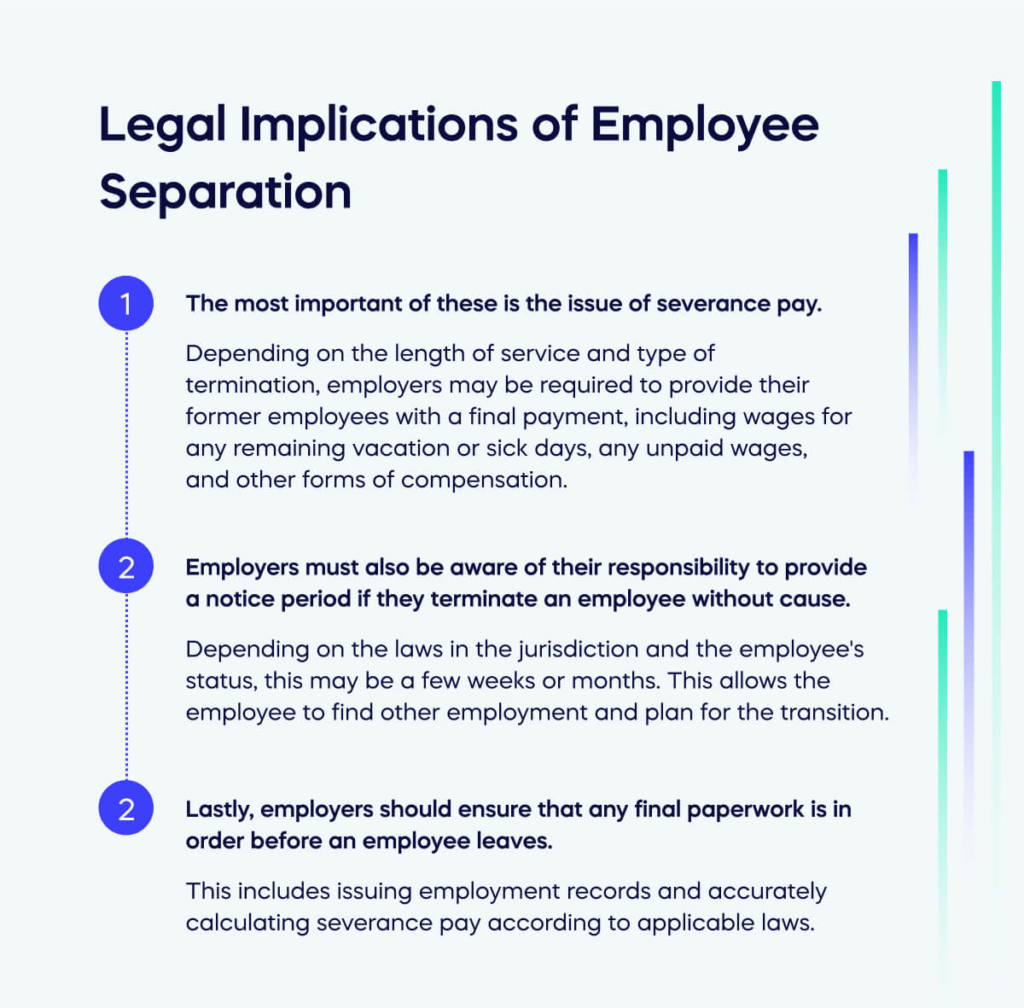With over 4 million employees each month in the U.S. leaving their job in 2022, many workers and the organizations they once worked for have undoubtedly experienced employee separation.
COVID-19 significantly impacted the workforce, leading to a surge in remote work, causing many employees to leave their jobs due to the stress of working from home or being laid off due to economic challenges.
Several factors, such as employee burnout, low job satisfaction, lack of recognition, poor management, limited growth opportunities, and inadequate compensation, can cause increased employee attrition rates.
The value of empathetic leadership in the workplace has never been more important than now. Understanding employment separation is crucial for organizations experiencing high turnover rates or employees who have been let go. Organizations must identify the causes of employee disengagement and strive to create a work culture that values employee growth and well-being.
As such, employees must navigate the complexities of the separation process and gain access to available resources, including severance packages, exit interviews, and unemployment benefits. Separation can be tricky for businesses to navigate whether an employee leaves voluntarily or involuntarily.
This article will delve into the intricate and often hazy employee separation process. We’ll cover its various types, relevant legal implications, and how it can affect the business’s current and departing employees.
What Is Employee Separation?

Terminating an employee’s tenure with a given organization is called employment separation.
This happens when the agreement between employer and employee expires through contract expiration or resignation by the latter party.
Although employers sometimes make decisions that lead to such separations, employees may also take voluntary steps to initiate retirement or resign.
Types of Employee Separation

With various ways for an employee and employer to end their professional partnership, each situation is special. To guarantee the ideal outcome in your company or career path, it’s important to fully comprehend what every type of employment separation entails.
Whether initiated by either party, familiarizing yourself with all available options can give you a clear trajectory toward success.
There are several distinct forms of job termination, including:
Termination
When an individual is looking to part ways with their employer, termination is one of the most traditional methods for achieving this goal. Various employment separation strategies fall within this umbrella term, providing employers and employees with helpful guidance as they pursue changes in job status.
The most common types of termination include:
- Constructive discharge: If employees have worked hard to rectify a difficult situation at their workplace, but it remains challenging, they can exit through constructive dismissal. This gives them some of the same rights as any other discharged worker if they have solid evidence supporting their case.
- Layoff: When a layoff occurs, an employee is let go through no fault of their own due to changing business needs, such as an acquisition or restructuring of departments. Future employers usually view being laid off more favorably than letting go for other reasons. Employees who are laid off may receive extended benefits and job search assistance to help them pursue a new career path they enjoy.
- Termination by mutual agreement: By reaching a mutual understanding, the employer and employee can reap the rewards of separation. Through such an arrangement, employers are given enough time to find their next hire while employees have an opening to map out their upcoming career ventures. It is truly beneficial for all parties involved.
- Involuntary termination: An employee involuntarily let go by their employer may feel disheartened. However, it can be a blessing in disguise. Involuntary terminations usually occur for justifiable reasons, and the individual remains competent enough to easily take on another job.
- Voluntary termination: Employees may terminate their employment when they secure a new job or retire. This occurs when the employee decides, of his own accord, that it is time for him to leave the company.
- Temporary job or employment contract ends: When it comes to temporary or contract roles, an employee and their employer know the ultimate end date. This can be beneficial in allowing for a clean ending that leaves opportunities for future collaboration.
- Fired: When an employee and employer don’t work well together, both parties should move on to something better suited for their individual goals. By choosing to terminate employment in these instances, employers can help facilitate this process so everyone involved can find a new job opportunity more aligned with what they hope to achieve.
- Termination for a cause: Being let go from your job for a certain reason can be hard, but it provides an opportunity to grow. With the given feedback provided by the employer, terminated employees should strive to use this experience as a learning moment and enhance their professional abilities.
- Termination with prejudice: Employers may opt to let go of an employee for good if they don’t plan on rehiring them. Although this can be difficult news, it gives both parties a much-needed opportunity for clarity and closure.
- Termination without prejudice: By terminating without prejudice, an employee may be eligible to reapply at the company in the future. This type of severance usually occurs when there are reasons other than job performance and provides them a chance to pursue roles with the same employer further down their journey if they want it.
- Wrongful termination: When an employee is unjustly let go of their job, it’s known as wrongful termination. Fortunately for affected workers, legal protections are in place to provide them with a potential route to justice and remuneration. Filing a successful suit can give the wrongfully terminated individual vital financial assistance to help them regain their feet and continue excelling in their career path.
Resignation
Resigning from a job is seen by many as an appropriate way to part ways with an employer, allowing those who resign to explain their departure respectfully and professionally when discussing past employment opportunities with future employers.
The most common types of resignation include:
- Voluntary resignation: When an employee elects to depart from a company for personal gain, it’s a voluntary resignation. It is customary to provide at least two weeks of notice before leaving the job to smooth the transition process for both parties involved.
- Forced resignation: Employers may find themselves in situations where a difficult decision must be made, and asking an employee to resign can be the best option. This allows employees to exit their current role voluntarily rather than being fired; this will look more favorable when seeking new employment opportunities.
Retirement
As an employee approaches the end of their working life. Many look forward to this major milestone in their lives, but for some, there are various reasons why they might need or choose to leave. Age and health issues can be contributing factors, such as financial reasons and personal preferences.
The most common types of retirement include:
- Voluntary retirement: As many professionals strive for, retirement is the closing chapter in one’s career. When you arrive at this thrilling moment, it can be time to voluntarily step away from your current position and resign.
- Phased retirement: Companies can help their aging employees make a gentle transition into retirement by offering them the possibility of phased retirement plans. This allows both parties to adjust gradually, allowing an employee’s work hours to be reduced until they are ready for official retirement.
- Mandatory retirement: By introducing a mandatory retirement policy, employers can encourage older employees to retire from the workforce and create room for fresh blood. This opens up an opportunity for existing staff to explore new ventures and allows the business to onboard someone new in their place.
Furlough
Being furloughed is an unpaid leave of absence in which you remain employed by the company yet are eligible to receive unemployment benefits and health insurance. Companies may elect to place employees on a temporary furlough instead of firing them outright; this allows businesses to preserve resources while maintaining their valuable personnel for future use.
This beneficial arrangement permits workers who have been furloughed to return seamlessly to their original roles at the business rather than seeking other employment opportunities elsewhere.
Reasons for Employment Separation

Sometimes employee separation is inevitable. For example, if an employee has been terminated due to performance issues or misconduct. Employee separation can also occur when an employee resigns or leaves the employment of their own accord.
It’s important to remember that there are numerous reasons why an employee or employer may want to end a professional relationship.
Here are a few of the most typical causes for ending an employment relationship:
- Employee performance: When an employer and employee fail to meet the same expectations, it may be time for the latter to look elsewhere. An alternative job or even a different organization might bring out the best in that individual’s skillset and help them reach their highest potential.
- New job opportunity: Securing a new position can help employees reach their personal, professional, and career aspirations. If an employee provides two weeks’ notice to the current employer, it leaves room for them to part on amicable terms while giving enough time for the company to find someone else as a replacement.
- Finances: Employers may choose to furlough or lay off employees as a financial measure that helps their company remain sustainable in the long run. Conversely, an employee might seek separation from employment if they find another role offering a more desirable salary and benefits elsewhere.
- Retirement: Retirement can become desirable for aging employees who want to explore their passions beyond the workplace. They benefit, as does the employer, who has an opportunity to recruit new talent and fill in any vacant positions that may arise.
- Relocation: Employees may select to move for many purposes, be it seeking closer proximity to family or assisting in their partner’s career shift. They can seize the opportunity to relocate and embark on this new journey by leaving their current employment.
- Change in family dynamic: Family changes, like becoming a parent or taking on the role of primary caretaker for someone close to you, may prompt an employee to leave their job – either temporarily or permanently.
Legal Implications of Employee Separation

When an employee is separated from their employer, there are several legal implications that both parties should understand.
The most important of these is the issue of severance pay. Depending on the length of service and type of termination, employers may be required to provide their former employees with a final payment, including wages for any remaining vacation or sick days, any unpaid wages, and other forms of compensation.
Employers must also be aware of their responsibility to provide a notice period if they terminate an employee without cause. Depending on the laws in the jurisdiction and the employee’s status, this may be a few weeks or months. This allows the employee to find other employment and plan for the transition.
Lastly, employers should ensure that any final paperwork is in order before an employee leaves. This includes issuing employment records and accurately calculating severance pay according to applicable laws.
Employee Separation: A Means To An End?
Employee separation is an inevitable part of the employment process. Though it may not always be easy, employers and employees should remember that this parting of ways can provide new opportunities for both parties to grow and thrive.
Whether you are transitioning out of a job or into one, it is important to take the time to evaluate your options, assess the situation you are in, and make a decision that is best for you.
You may find that this separation could be exactly what you need to reach your next level of success and personal fulfillment.

